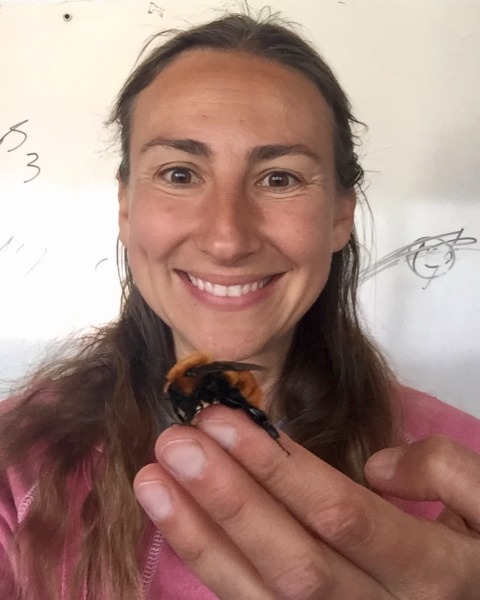Student 10-Minute Presentation
Physiology, Biochemistry, and Toxicology
Student
Student Competition
Investigating variation of nonflight thermogenesis between castes of bumble bees (Bombus impatiens)
- AK
Alex Christopher Kurtt
Iowa State University
West Des Moines, Iowa - EI
Erika J. Ibarra-Garibay
Iowa State University
Ames, Iowa 
Amy Toth
Professor
Iowa State University
Ames, Iowa
Presenting Author(s)
Co-Author(s)
Thermoregulation is an essential adaptation for foraging and nest construction in Bombus spp. and understanding its intricacies may be crucial in predicting their responses to global change. Despite Bombus spp.’s critical role in commercial food production and ecosystem stability, there is limited knowledge on how thermal physiology varies between groups and individuals. Social castes, in particular, vary significantly in both life history and body size, thus accounting for intraspecific variation may offer insight to how subgroups of populations will react to changing climates. This study aims to investigate whether thermal physiology varies between castes, specifically non-flight thermogenesis: the ability to generate heat via thoracic muscular activity. Using Bombus impatiens as a model generalist species, we collected specimens of each caste from Central Iowa, USA. Specimens were subsequently subjected to a 20-minute cold-induced “coma”, after which, rewarming thoracic temperature was measured using non-destructive infrared thermal imaging to compare final temperatures and rates of warming. Our findings indicate that rewarming rates differ among castes with queens exhibiting the slowest warming rates; however, final temperatures did not vary significantly. Additionally, the rate of rewarming was not constant over the trial period, suggesting distinct passive and active warming phases. We utilized a comprehensive multipoint model to compare rewarming rates within these phases, incorporating other factors such as body size and mass. These data contribute to a greater understanding of the basic biology of non-flight thermogenesis in Bombus and suggest intraspecies variability could influence populations’ thermal stress responses and climatic vulnerability.

.png)

